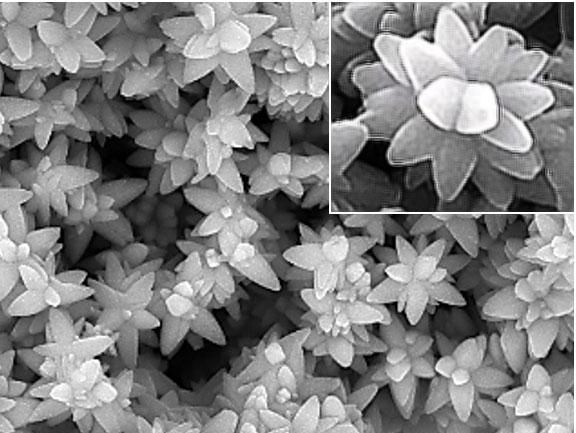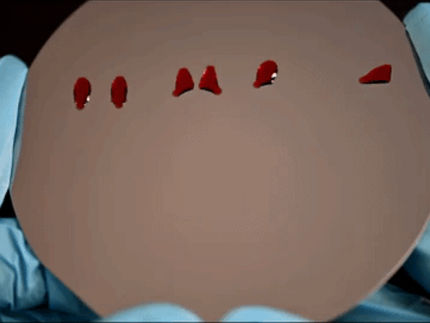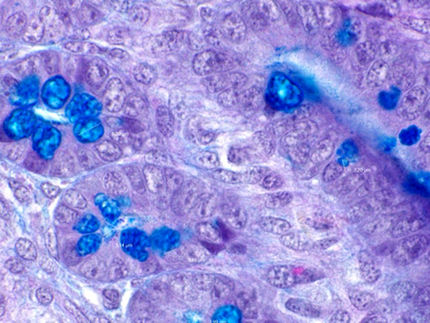Surface tension can sort droplets for biomedical applications
Scientists describe their most recent innovation in engineered superomniphobic surfaces
Imagine being able to instantly diagnose diabetes, Ebola or some other disease, simply by watching how a droplet of blood moves on a surface.

A scanning electron microscope image shows titanium dioxide "nanoflower" structures on the superomniphobic device surface.
Sanli Movafaghi/Colorado State University
That's just one potential impact of new research led by Arun Kota, assistant professor in Colorado State University's Department of Mechanical Engineering and the School of Biomedical Engineering. Kota's lab makes coatings that repel not just water, but virtually any liquid, including oils and acids - a property called superomniphobicity.
They described their most recent innovation in engineered superomniphobic surfaces. Kota and his team engineered a simple and inexpensive device that can sort droplets of liquid based solely on the liquids' varying surface tensions. They did it by making their device's surface tunable, meaning they can manipulate its surface chemistry to turn up or turn down how well it repels liquids.
The researchers patterned a surface with titanium dioxide "nanoflowers" by decorating a pristine thin film of titanium in a nanoscale pattern that looks like a field of flowers under a scanning electron microscope. Exploiting titanium dioxide's photocatalytic properties, they slightly changed the surface chemistry on various spots on the device by shining UV light on it for set lengths of time.
The result: a flat film that can sort liquid droplets based on their surface tensions, when the device is placed at a slight incline.
This elegantly simple concept could form the basis for a host of applications, from biosensors for point-of-care diagnostic platforms to lab-on-chip systems that can quickly distinguish between droplets of different chemicals, or diseased and non-diseased blood.
Fundamentally, Kota's team is interested in the physics and chemistry of how and why some materials result in superomniphobicity, as well as perfecting the science behind superomniphobic surfaces.
"But we're engineers, so we need applications that can translate commercially," Kota said. "The dream is to create superomniphobic surfaces that are mechanically durable. People can make interesting surfaces, but the problem is that some aren't very durable. If you can make something but it doesn't last, who cares?"
Original publication
Other news from the department science

Get the life science industry in your inbox
From now on, don't miss a thing: Our newsletter for biotechnology, pharma and life sciences brings you up to date every Tuesday and Thursday. The latest industry news, product highlights and innovations - compact and easy to understand in your inbox. Researched by us so you don't have to.


























































